
One of the things I cherish when I travel is the local food I find there. Many of you may do the same. This is one of the reasons we are increasingly seeking out homestays and smaller guest houses, preferring to give the regular hotels a miss.
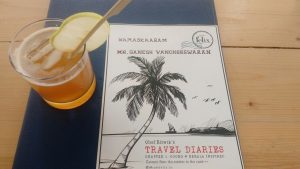








One of the things I cherish when I travel is the local food I find there. Many of you may do the same. This is one of the reasons we are increasingly seeking out homestays and smaller guest houses, preferring to give the regular hotels a miss.








A village enveloped in thick, white fog, the monsoon, and memories of ‘Malgudi Days’.
This story first appeared in Mint on Aug 26, 2016 under the section ‘Weekend Vacations’.
____________________________________________________________________________

I stepped off the bus and walked right into a white wall. Turning around, I saw the white wall creeping up behind me. It took a few seconds for my dazed mind to realize that it was actually thick fog. Almost animate, it was on the prowl, gliding without warning, and wrapping itself around the entire village.
A friend and I were in the hilly hamlet of Agumbe in the Western Ghats. An overnight bus journey from Bengaluru had brought us here for a weekend getaway to savour the magic of the monsoon. After all, Agumbe is one of the wettest places in India.
We had to trudge only 200m to Kasturi akka’s house (akka means elder sister in Kannada) from the bus stand. Locally known as Dodda Mane (big house in Kannada), it’s a village landmark.
Akka’s family has been giving sanctuary to weary travellers for 45 years, essentially converting Dodda Mane into a home stay much before the word started occupying an exalted position in the hospitality industry in India. This two-storeyed, traditional Malnad house, built with teak wood and stone, is more than 125 years old. Thick wooden columns line the front court; beyond it lies a central courtyard with potted plants circling it. From there, stout doors lead to the bedrooms and the kitchen.
Despite its rambling spread, there is a curious charm about it.
Akka’s son showed us to the rooms and dormitory on the first floor. The wooden stairs creaked under our feet. The sound was enough for the dame of the house to holler to ensure that her guests were okay and tell us that we could join her in the kitchen if we liked.

The kitchen had an old-fashioned brick stove, with large cucumbers hung above it to dry. At the corner of a large vintage table sat akka. The introductions happened over breakfast.
The first day was reserved for a trek to the Jogigundi Waterfalls, about 4km away. We logged a kilometre on the paved road before veering on to a forest trail. The slushy dirt path, with small, slippery rocks, put us to the test. The tall trees made a thick canopy above our heads and slim streams formed temporary capillaries around them. Thankfully, it had stopped raining.
The silence of the forest was punctuated only by the call of crickets and cicadas. We were about an hour into the trek when we heard a rising roar, an indication that we were nearing the waterfall. Stepping over fallen logs and walking down mossy stone steps, we parted the thick foliage to emerge at the base of the waterfall.
The Malapahaari river was rushing thunderously over boulders. It emerged from a cave-like formation, flowing down in a long trail over a series of rocks. We got as close as we could to the water, feeling the misty spray on our faces.
A couple of hours later, we headed back—and relaxed in the courtyard of Dodda Mane. Dinner that night was an excellent Malnad-style repast—high on vegetables and low on masala (spices) and oil.
There were no arguments about whether the next day should be dedicated to akka’s stories and a generous supply of kashaya (a herbal concoction). We decided to forgo the trip to Sirimane Falls (38km away) and the temple town of Sringeri (29km away). And over several cups of kashaya, akka and her family recalled the days when a few shows of the TV serial Malgudi Days had been shot in that very house.
By noon, the monsoon was living up to its promise, and fat drops of rain were exploding again on the roof of the house. The downpour came as a tonic, and we decided to take a short ride to an ancient Jain temple (19km).
We climbed the steps to the top of the temple and walked to a rocky outcrop at the rear. Volunteering to get slammed by the wind, we looked out at the outrageously green valley, punctuated by capillaries of freshly created streams.
It didn’t take long, of course, for the fog to blot out the scene.
The Brihadeeswarar Temple in Thanjavur is a jewel among temples. Take an early morning turn and discover a whole millennium of history hidden in its portals.
This story first appeared in Trujetter magazine in their September 2016 issue.
________________________________________________________________________________

In the gentle light of early morning, the gopuram shines like burnished gold. I stand across the road from it and simply gazed at it. It feels exceedingly good to be in Thanjavur because of the town’s welcoming vibes. As I was looking around, I heard a question in Tamil “Where do you want to go, sir?” A spry, middle-aged gentlemen stopped his moped right next to me. “Periya kovil,” (the big temple) I said. “Vaanga, okkarunga. Naan konda vidaren,” was his smiling response (“Come, I will take you there.”) I thanked him and clambered on. A fiveminute ride later, I was deposited opposite the main entrance to the Brihadeeswarar Temple (which the locals have simplified to ‘big temple’).
The temple is dedicated to Lord Shiva. There is a large square forecourt surrounded by the walls of the temple. In the centre of this forecourt is a large square slab of stone, on which stands the temple. There is a neat sense of proportion and symmetry in the complex. At this hour, there are not more than a dozen others who have come to see this wonder. The silence is punctuated by bird calls and the whisper of a mild, cool breeze.
I heard a voice behind me and in no time a guide appeared from nowhere. For the hundredth time, I marvel at how guides all over the world, manage to sidle up to you quietly and catch you unawares. Selvam was welldressed with a mild look on his face. His card proclaimed him to be a Government-certified guide to the temple. As we start walking towards the sanctum sanctorum, Selvam takes up a well-rehearsed narrative about the temple.
Amazing Architecture
Raja Raja – I, the great Chola Emperor who ruled Thanjavur during the turn of the first millennium, broke a few architectural canons when he had this masterpiece of a temple built. Selvam informed that this is one of those rare temples in which the Vimana (the tower that rises over the sanctum) is taller than the Gopuram (the ornate tower at the entrance to the temple). Also, rather than build the temple outside-in, the master artisans built it inside-out. In other words, they built the siva lingam first, then built the temple tower over it and finally, added the various cloisters surrounding the sanctum sanctorum. The statue of Nandi the bull, the bali peedam (sacrificial alter) and the dhwaja sthambham (flag pole) were all built later.
The ceilings bear several frescoes in colours that have Selvam mentioned that the artisans used vegetable dyes to paint the murals. The outer walls of the sanctum contain a detailed commentary on the life and times of the Cholas, dwelling on social customs. I tried my best to read the lines, but the script was in ancient Tamil.
The temple is a wondrous example of how scale and intricacy of architecture need not come at the cost of visual harmony. Not one stone, sculpture, pillar or pathway in the temple seems out of proportion. UNESCO has done itself a favour by bestowing the label of World Heritage Site to this temple complex. remained vibrant to this day.
The Magic of Nine
A number of things in the temple are in multiples of nine, because apparently, Raja Raja (whose real name was Arulmozhivarman) believed nine was a lucky number. The vimana for instance, is 216 feet tall. And then, there are 108 small nandis erected around the temple complex. His empire was stretched all the way from Kalinga (today’s Odisha) to Ceylon (Sri Lanka) at one point in time. He was one of the first Indian rulers to annex neighbouring countries, thereby introducing Tamil culture to those faraway lands.
For a long time, the Brihadeeswarar Temple played host to royal ceremonies in the kingdom. Dance performances were held often, especially when dignitaries from other kingdoms came visiting. The splendid natural acoustics of the temple and its beautiful openair setting provide a perfect background to music and dance performances. Even today, such performances are held once in a while. Interestingly, daily rituals and ceremonies are performed in this temple even today, which is somewhat uncommon among temples of this period. The entire complex is well-preserved, which is more than what you can say about most other monuments in our country.
I glance at my watch to see that three hours had flown past. The sun was high up as I exited the temple. The food cart on the pavement is still doing brisk business, but I am not tempted by the fare, being thoroughly satiated by the sensory feast I have just gorged on. I thanked Selvam for sharing his knowledge with me and left.
From the unique nodding dolls (Thalayatti bommai, as they are called) to the Tanjore paintings, from the temples along the Kaveri river to the legacy of different dynasties of rulers, Thanjavur is a town of many pasts and many stories. It has had a glorious history as the seat of a mighty lineage of emperors and as the centre of Tamil art and culture. In the midst of all this, the Big Temple continues to have a towering presence, effortlessly linking the past to the present.
This story first appeared in Khaleej Times on August 11, 2017.
_____________________________________________________________________________

The building is one of the many structures on Gali Qasim Jaan in the congested mohalla (neighbourhood) of Ballimaran in old Delhi. At first, I mistake it for a tenement that is being shared by a dozen families, much like other buildings around it are. It is only when I look closer that I notice the differences. For one, this building is made of red bricks and stone, unlike its neighbours that sport the look of modern-day cement-and-paint structures. Secondly, this is the only building on the street that has a uniformed guard at the entrance. And finally, it seems to have a more dignified appearance than the others.
I stand opposite the arched entrance for a couple of minutes and gaze at the building. People sweep past me on this narrow, congested street and cycle rickshaws tring tring furiously. Iron shutters are rolled up as shops open for business. The air is thick with the cries of hawkers and the smells of breakfast being cooked in a dozen homes.
It is just another day in Purani Dilli (old Delhi), but I am oblivious to it all.
I only have one thought: that I am finally about to step into the old residence of Urdu and Persian poet Mirza Ghalib. It has taken me years of planning and wishing and dreaming, but here I am finally. Truly, a pinch-worthy moment.
The first time I heard of Mirza Ghalib was when I was in school. I came to know that our national television was airing a serial titled Mirza Ghalib. I learnt from an uncle, who lived next door, that it was about the life of a great man who went by the same name. He was supposed to have been a wonderful Urdu poet, someone who was feted for his shaayari. Since my proclivities at that age had less to do with high falutin poetry and more to do with games, the serial was of no consequence to me.
It was only in college that I came face to face with Ghalib’s poetry. Cloaked in the melancholic baritone of Jagjit Singh, a noted ghazal singer, Ghalib’s poetry was like a beam of soft moonlight on a hot summer night. In the years that followed, I came to know the man rather well through his writings. And now, after all these years, I was visiting the house where he had spent his last days.
A plaque at the entrance announces this as ‘Mirza Ghalib Ki Haveli’ (Mirza Ghalib’s mansion). I smile at the security guard and enter the short corridor that leads to the house from the gate. There are two rooms: one ahead of me and another to my right. Both rooms are lit by yellow lighting that casts a soft glow. I walk into the room ahead and look around. There is no other visitor at the moment. The guard joins me and tells me that the house was occupied by various people after Ghalib’s death in 1869 and lost some of its original character because of repeated modifications. When the government decided to convert it into a memorial, it had to buy the house from someone who was running a motor workshop here.
Mirza Ghalib was one of the best Urdu and Persian poets. Born Mirza Asadullah Khan in Agra in 1797, he adopted the nom de plume Ghalib (meaning ‘victor’). He spent most of his life in Delhi, though he spent only the last few years of his life in this particular house. He travelled to places such as Rampur, Calcutta, Murshidabad and Varanasi, meeting and exchanging verses with the nobility. His verses are considered by many to be a benchmark in Urdu poetry and loved for their depth of feeling. I recall my historian friend Swapna Liddle, an expert in the history of Delhi, telling me that Ghalib acquired quite a fan following, with scores of fans writing to him regularly.
Though I love Urdu poetry in general, and have closely followed the works of Zauq, Daag and Mir, there is something about Ghalib’s writings that I find particularly endearing. I guess it is a very personal choice, partly dictated by the fact that the themes he wrote about are ones that I am naturally drawn to. Ghalib frequently struck a distinct philosophical tone in his poetry, musing about life, death, love, passion, pain, suffering and so on.
The din of the streets outside is very faint as I walk around the small memorial. The exposed brickwork of the walls lends character to the place. The walls are adorned by pictures of Ghalib and his couplets. One of the pictures, in which he is reclining on a cushion and writing, even as he draws on a hookah, certainly portrays a person of refined taste.
Finding his family tree framed on another wall comes as a surprise, because I hadn’t thought of his family at all. It could be because I had grown up knowing him only through his poetry, which is an entirely personal affair. The family tree traces the family all the way back to the early 18th century. A couple of small chambers lead off this room and contain more couplets and a large tome containing his poetry.
I try to picture life here during Ghalib’s times – a period when the last of the Mughal emperors was still on the throne and when Old Delhi used to be called Shahjahanabad. He lived in turbulent times and witnessed the First War of Independence in 1857. Entering the second room, I see a bust of the poet, a synopsis of his life and a picture of his wife Umrao Begum. Ghalib’s haveli is light on artefacts, but rich in atmosphere. It is a wonderful throwback to his time.
That evening, I go to Nizamuddin, a few miles away from Ballimaran. While Ballimaran gave the revered poet a home in life, Nizamuddin is where he is housed in death. I have come to visit his tomb. A number of people I ask have absolutely no clue about it. Finally, a passing maulvi (Muslim priest) shows me the way.
The arched entrance to the complex is built in Islamic style. Inside, several children are playing cricket. The azaan rings out from the famous Nizamuddin dargah nearby. I dodge a flying ball, cross an enclosed 16th century pavilion called Chausath Khamba (sixty four pillars) and find myself in a quiet courtyard. In the middle of the courtyard, lies Ghalib’s tomb – a simple room constructed in white marble. Through the open doorway, I can see a faded muslin cloth draped on the grave, with a few dried flowers lying scattered on it.
The caretaker of the tomb tells me that, barring the occasional group of ardent historians or lovers of Urdu poetry, not many visit the grave. Much of the city of Delhi seems to be unaware that one of its most revered poets lies buried in its midst. But then, this is hardly surprising in a city that is littered with heritage sites.
I sit on a stone bench for a while, listening to the prayer coming from the dargah. I finally rise, pay my respects to the poet and leave. My pilgrimage is complete.
Fact file
Ghalib’s memorial is in Gali Qasim Jaan, in the Ballimaran area of old Delhi. Given the congestion in the area, it is best to take the Metro to Chandni Chowk and walk from there. The memorial is open from 10 am to 6 pm, and is closed on Monday. Ghalib’s tomb is located next door to the dargah of Hazrat Nizamuddin, a revered Sufi saint. There is no entry fee for either site.
This story first appeared in The Hindu on August 23. 2017.
____________________________________________________________________________
Recalling his trip to Hampi, Rajesh Santhanam is somewhat surprised at himself. An avid traveller for more than a decade, he has had his share of long bike rides and treks in remote mountains. But the trip to Hampi (a cluster of ruins that dates back to the Vijayanagar empire and a UNESCO World Heritage Site) stands out for a simple reason. He went there to participate in a run, something he had never done before.
At the crack of dawn on a cool Sunday morning, he joined a few hundred others in running through the ruins. Much before the hordes of tourists descended upon the scene, the runners were already exploring the place, loping past centuries-old temples and step-wells.
A run vacation is an exciting new development in the Indian travel scene. In essence, it is a run that is professionally organised in a popular tourist destination. It combines two highs: that of running and that of a holiday. As a participant, you can reach the destination a few days in advance, explore it, and then finish your vacation with the run. Or, you could start your vacation with the run and then stay on for a few more days. The fact that the run is not timed enhances the fun.
In its infancy in India, the idea of run vacations is attracting a growing number of people. Go Heritage Run, a company that organises such runs, has seen nearly 6,000 runners participate in their runs in the past three years. Many of them are repeat participants, which is a good indication that this experiment is working. The company offers a calendar of professionally-organised runs throughout the year, in settings as unlikely as Ooty, Halebidu, Khajuraho, Mirjan Fort and Murud-Janjira. Running through the verdant greenery of the Nilgiris, enjoying the pure air, is an unforgettable experience. Or for that matter, taking in the beauty of the seaside Murud-Janjira Fort. You get to see the place in a totally new light. At the end of the run, you are given breakfast, a certificate and a medal.
If running is not your thing, you could consider signing up for a riding tour instead. A riding tour is essentially all about hopping onto a motorcycle and exploring a place leisurely. It allows you to make impromptu stops along the way, interact with locals and soak in the culture of the place. Seeing that more urban Indians, including women, are interested in long rides, professional outfits such as The Travelling Circus have started organising riding tours. This company has organised more than 25 long rides since its inception in 2011. Destinations on their map include Chikmagalur, Bhutan, Sri Lanka, Ladakh and Kinnaur. Rajasthan and Cambodia are being added this year. Details of every tour are planned professionally, with rider safety getting top priority. Your group is accompanied by a support van, a stock of spares and an experienced mechanic.
If you think these rides are meant only for seasoned riders, think again. If you are a first-timer, such a tour can actually help you ease into bike riding. By the end of a tour, you may even fall in love with it!
There are many factors that make these tours tick. Experiencing the sheer thrill of long-distance riding, bonding with like-minded people, and travelling through beautiful places in an immersive manner, are the key factors that make these tours attractive. Of course, they often entail long riding hours and call for a certain level of fitness. At the same time though, you are guaranteed a lot of fun, adventure and a spirit of support and sharing, all of which help seal friendships. And friendships formed on the road do have a special flavour.
Run vacations and riding tours symbolise the changing motivations of the urban Indian, who sees travel as a way to quench his thirst for adventure. In the process, they help discard many stereotypes.
In Chandannagar, time flows as languorously as the Ganga beside it.
This story first appeared in Mint on November 9, 2017 – in the section titled ‘Weekend Vacations’.
_____________________________________________________________________________

The statue of Marianne, a national symbol of France, outside the Dupleix mansion.
The rains had left the fields lush green, a vivid contrast to the dark brown soil at the base. This dual-colour canvas kept a tight grip on the sides of the road through most of the trip. Bustling villages and near skirmishes with traffic ensured there was never a dull moment on the drive from Kolkata to Chandannagar.
My decision to go to Chandannagar for the weekend had been an impromptu one, taken the night before. The fact that it was the only French colony in Bengal in the 17th century, at a time when the British were making determined inroads into the region, made me curious. And so, late one Saturday morning, I hopped into a taxi for the 53km ride. It was a swift and mildly disorienting transition from the crush of humanity in Kolkata. As we entered Chandannagar, my driver pointed to two pillars topped with urns. He said these were all that remained of the grand gate built by the French in 1937.
I asked him to take me to the Dupleix Museum, located in a large yellow mansion. It is one of the few in India that houses a collection of artefacts from French rule, which lasted more than 250 years. Chandannagar was a major trading and military hub for the French during the 18th and 19th centuries. And this mansion used to be the official residence of French governor generals. Apart from French memorabilia, the museum houses rare collections of statues, letters exchanged between freedom fighters, and news clips on the freedom movement in Bengal. With its colonnaded courtyard, broad slatted windows and high ceilings, it is a throwback to period architecture. Even today, French is taught at an institute that operates from the same premises.
Leaving the museum, I headed to a stall nearby for a leisurely mutka (earthen cup) of tea. I was in no mood to rush from place to place. Already, I could feel my heartbeat settling into a slower rhythm. Chandannagar has that effect on you.

Continuing my journey into the past, I walked up to the lovely Sacred Heart Church, close to the Dupleix Museum. This church, designed by French architect Jacques Duchatz, was inaugurated in 1884. Stepping into its cool portals, I was transported back to the 19th century. The stained glass, old furniture and colourful murals along the nave are largely intact. Later, I walked through the restored graves and tombstones in the cemetery adjoining the church. Buried here along with other nobles is the long-forgotten French commander Duplessis, one of the town’s founding fathers.
Exploring the streets that evening, I saw a number of rambling bungalows from the French period. The structures, still intact, exuded an air of genteel neglect. There was an abundance of greenery. Traffic was sparse and slow-moving. Passing through the local market, I was struck by the absence of the hoarse cries one normally finds in Indian markets. Even the haggling was absent. It seemed as if the entire town loathed anything loud or frenetic.
Wending my way to the strand, I sat on a bench. A few others had colonized benches to read the newspaper or chat. In front of me, the Ganga, known in these parts as the Hooghly, flowed gently, with barely a murmur. Boats ferrying locals were the only traffic. And quiet descended as soon as the day’s activity wound up with the setting sun.
Fortified by some luchi-aloo dum the next morning, I sallied forth again. This time, to the stunning Nanda Dulal temple with its cream-and-vermillion exterior. This temple is built in the do chala (double sloping roof) style native to Bengal, but is, surprisingly, devoid of the terracotta work that is typical of buildings in this district. I learnt from the priest that this temple, which houses a deity of Lord Krishna as a child, was first built in 1740, destroyed and then rebuilt.
I was tempted to join the boys playing volleyball in front of the temple. In keeping with the mood, however, I decided to return to my room to curl up and read.
This story first appeared in Khaleej Times on November 17, 2017.
‘Parawa Street’ – proclaims the name board. It intrigues me, because I can’t understand what it means. All morning, I have seen boards that said ‘Church Street’, ‘Rampart Street’ and the like. Fed on this simple diet, my brain finds it difficult to process ‘Parawa’. A closer inspection of the board tells me that the term refers to fishermen and traders who immigrated from south India and settled in Galle centuries ago. During their time, the Dutch, the main colonisers of Galle, renamed this street ‘Parruastraat’.
Parawa Street is one of the several narrow streets that make up the old settlement inside Galle Fort. Clean and well-paved, the streets are lined on either side by elegant structures. Many of these are a century old, while others go back two centuries or more – when Galle was under Dutch occupation. Many houses have a small portico and a wicket gate, and are painted in brilliant hues of blue, red, orange or yellow. Potted plants hanging from their sloping tiled roofs enhance the mood of cheer.
It is past 9am on a weekday, but most of the shops and boutiques are still closed. I ask a passerby when they will open and receive a smile in return. “They will open, they will open,” she says and moves on. Traffic is mild, mainly comprising pedestrians or those cycling. The town of Galle is not in a hurry at all. The general understanding seems to be that things here will happen in due course. It, therefore, seems fitting that Galle is our last port of call in a weeklong tour of Sri Lanka. While we entered the country in high excitement, we shall leave it in a state of quiet contentment.
From medieval times to the 19th century, Galle was an important port town near the southern end of the teardrop shaped island of Ceylon (Sri Lanka). Like in India, the Portuguese were the first Europeans to colonise Galle. When the Dutch overran the settlement in the 17th century, they strengthened and expanded the erstwhile mud fort and many of the buildings within its confines. Also, they erected several of the beautiful timber-stone-cement structures that are standing strong even today. The British came later and added a few lovely churches to the landscape.
The wife and I amble along the ramparts of the fort, stopping to take in the view now and then. We get panoramic views of the sea and at one point, of the grassy expanse of Galle International Cricket Stadium. Passing close to the historic Meeran Mosque, we stop to admire its pristine whiteness, arched windows and architectural symmetry. Inside, the beautiful floor tiles and the stained glass windows catch our eye. Close to the mosque lies a small Buddhist temple, also pristine white. After two hours of walking, we come a full circle to where we had started from: the fort gates. Feeling hungry, we hurry over to a small shack nearby that is serving hot food. We wolf down kothu rottis (a native dish made of wheat or wheat flour, stuffed with a spicy mash of vegetables, fish or chicken) for lunch.
Back at our home-stay, we lounge in the sea-facing balcony with our books. Since this is not the tourist season, the crowds are thin. Come afternoon, many of the smaller shops in the fort settlement close for a few hours, as their owners catch some shut-eye after lunch. When the sun’s rays start slanting, we head out again. Drumbeats and strains of the guitar lead us to a quadrangle near the courthouse, where a local band is performing on the sidelines of a literary festival. The songs are in English and Sinhalese, and are received with energetic applause. As darkness settles, we leave the music behind and seek out the sea again. The lighthouse, built in 1939, looms up in the darkness. Right next to it, lies the old magazine room of the Dutch Navy. Sitting on the ramparts with our legs swinging over the drop to the ocean, we look at the glowing moon and the white foam slamming into the rocks.
At dawn the next morning, I leave my sleeping wife and venture out with my camera, eager to frame the beautiful town in the soft sunlight. I walk over to the fishermen’s wharf and watch the day’s catch being unloaded. Several people are buying fish fresh off the boat. Every day, fishermen put out to sea hours before dawn and return with their first catch by 7am or so.
The winding alleys are quiet, with most people still abed. I am happily surprised to see that Galle has not let its built heritage go to seed, unlike many other places around the world. Supported by a grant from the Dutch government, most of the old buildings have been lovingly restored and repurposed into cafes, art galleries, boutiques and hotels. Today, these are symbols of the chic tourist destination that Galle has become and proof that conserving heritage can be truly profitable for all the stakeholders.
My wife joins me for breakfast at the home-café run by an old man of Moroccan descent. Galle’s Moroccan connection is a thread hidden deep inside the cultural fabric of this town. A small community of Tamil-speaking Muslims, seventh- generation descendents of traders from Morocco, resides inside the fort. Many of its members run small grocery stores or cafes from the courtyard of their homes.
Meal over, we take in the wonderful exhibits at the National Maritime Museum. A nod to the long seafaring traditions of Lanka, the museum houses maps and intriguing tales of shipwrecks alongside jade jars from China and several European memorabilia. Later that day, we take in the antique furniture, exquisite stained glass, tombstones and silence at the Gothic-style All Saints Church. As we walk back to our homestay, the eager shouts of boys playing cricket rend the air. Daytime cricket on the wide ramparts of the fort is a way of life here.
Decidedly, Galle is a great place to celebrate the slow life. The rhythms of this fort settlement are gentle. The cobbled-stone streets, old buildings, bookstores, cafes and the timeless nature of waves crashing into the rocks lull you into a state of peace. The frenetic sounds and movements of the big city stand out by their absence. Conversations are more like soothing murmurs. Nobody seems to be in a hurry to do anything.
Though I hold several striking memories from my time in Galle, the one that dominates my mind is that of the breakfast on the morning of our departure. Our hostess served us appams (sweet-salty rice pancakes with a thin crust and a fluffy middle), spicy chickpea curry, fragrant stew, toast, butter, marmalade, coffee and slices of juicy pineapple. Sitting in the balcony facing the ramparts of the fort, we gorge on the delicious homemade fare for what seems like hours. Yonder, the sea rustles like sandpaper and gulls swoop down.
This memory stands out because that breakfast is the best metaphor I can find for the town itself. Galle is like a wonderful repast: it offers a sumptuous spread, invites you to dawdle over it, stimulates your palate and ensures that the after-taste remains for a long time.
NEED TO KNOW
Galle lies 77 miles south of Colombo, from where you can take a bus, taxi or a train named Queen of the Sea. The route hugs the coast and runs past several beautiful villages. Accommodation options are aplenty, from posh hotels to tiny guest houses, and straddle a wide price range. Since Galle Fort is perfect for walking, take along a pair of comfortable shoes, sunglasses and a bottle of water.
wknd@khaleejtimes.com
The story behind Mumbai’s Jewish connection. And how Masjid Bunder railway station got its name.
_______________________________________________________________________
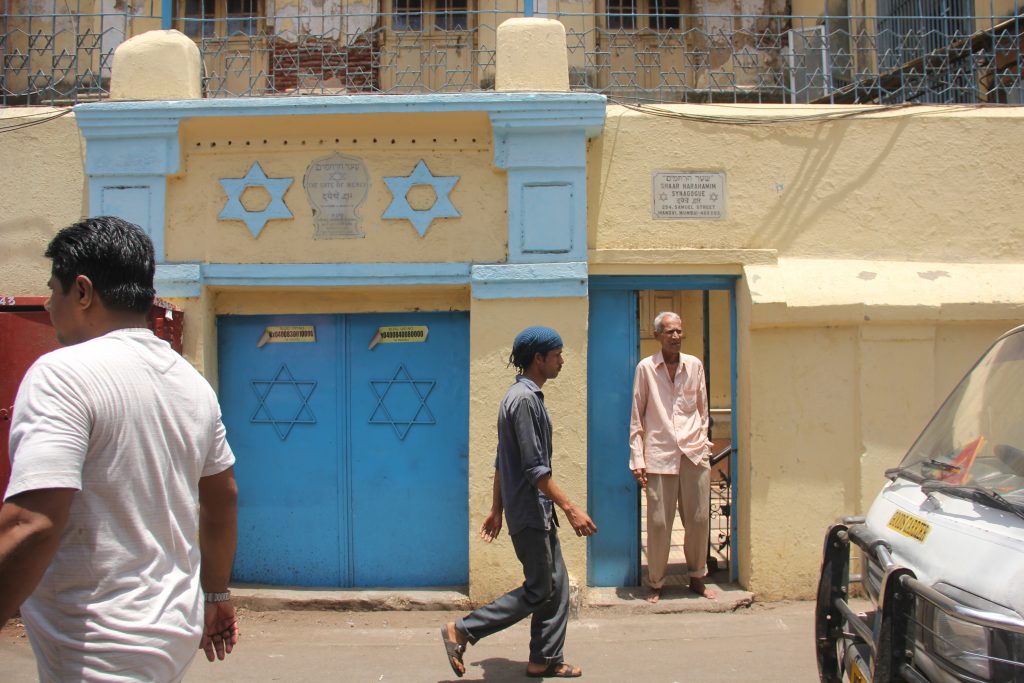
I stumble out of the packed Central Railway local train at the Masjid Bunder station. As it always happens with me when I alight from a local train in Mumbai, I remain dazed for a few minutes as I try to get my bearings. Being packed like a sardine for more than an hour leaves my hair and my wits askew.
Crossing the narrow foot over bridge on the Eastern side, I descend into the crowded bylanes of Mandvi. All around me, vegetables and other goods are being loaded onto or unloaded from trucks. Cycles and scooters are parked haphazardly. Stalls selling samosas, vada pav, lassi and lemon juice dot the lanes here and there. Pedestrians rush past, elbowing you aside, as they always do in this thrusting, frenetic city.
It is the fag end of May and the air is smothering me like a hot, wet blanket. This is Mumbai at its humid worst, but the good news is that in a couple of weeks or so, the monsoon will start. And that will bring relief from the sapping heat and humidity, though it will ruin daily life in other ways.
A hundred feet down this street, I turn right into an equally narrow (but more peaceful) street. As I walk further into it, the sounds of the market thin out a little. I can feel the air eddying around me, moving more freely. The hot, wet blanket has been taken off.
Ahead of me, to my right, I spot a police post manned by three constables. Two of them are lazing around in chairs behind a large table, while the third is standing with a rifle in hand. On the table, a wireless set is squawking out staccato sounds, interspersed with static.
Across the door from the police post is a shabby yellow building with a small blue door marking its entrance. The doorway is short enough to make many people stoop to enter, I remember thinking. In response to my knocking, it opens a minute or two later. I don’t know what I had expected, but I definitely did not expect to see a slightly shriveled, reed-thin man with a gaunt face and bent shoulders. Hoping that my surprise did not show on my face, I step in and introduce myself. He grunts in response, turns and walks inside. I take that as a cue to follow him.
My eyes wander around the tiny compound, taking in the hand pump, the stairs leading to the adjoining building (which could be where this man lives, I speculate) and the small courtyard separating the gate from the building into which he is now leading me. Not a single tree or plant, I note, disappointed.
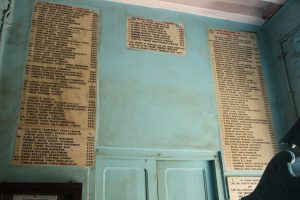
The gaunt, thin man turns out to be the caretaker of the synagogue. I have forgotten his name (a pity, but then, I am bad with names), but I will call him Sam in this piece. Short for Samuel, which is as good a Jewish name as any. Sam is befitting, also because it is the name of the person who built this synagogue nearly two and a half centuries ago – Samual Diwekar.
Sam leads me up four steps into a small verandah, where a mesh screen is keeping away the blinding sunlight and bringing in a semblance of cool. A Marathi newspaper is lying open on a reclining chair.

‘Not many people come here anymore’, he says. ‘Service is held only on Saturdays.’ After a pause, he goes on with a wistful glimmer in his eyes ‘But earlier, it wasn’t like this. This place used to be crowded, with people coming and going. Many services used to be held those days.’
I had been so mesmerized by the faraway look in his eyes, that I had forgotten where I was for a moment. His mention of services past instantly recalls me to the present. I remember that I have finally traced the oldest synagogue in the city of Mumbai, a synagogue that was built in 1796. Who would have thought that deep in the bosom of this city lay a building of such historic and cultural value? A building that was the temporal centre of a once-thriving community, that now seems to be counting its last days in India.
And in a way, Sam is the live-in custodian of this cultural heritage today. The lines etched deep on his face, his furrowed brow, his bony frame and the cap perched atop his pate are all still vivid in my memory. As is his slightly melancholic look, his rheumy eyes and mournful tone.
I can imagine him staying in this building almost the whole day, every day, hardly stepping out other than to buy certain essentials. Would he be getting any social visitors at all, I wonder? And what about family? There is something about Sam that hints that he is a loner, withdrawn from the world. Whether he actually is one or not, I don’t know. But stray phrases he lets drop over the next hour only emphasize this feeling.
I speculate that Sam’s personal frame of mind mirrors that of the entire Jewish community in India. Once a large, thriving community, they have now been reduced to a few clusters here and there: in Mumbai, Thane, Pune and Kerala, for instance. While the last remaining Jews of Fort Kochi in Kerala have entered the pages of tourist guidebooks, those in Mumbai have escaped that attention. Indeed, when I was trying to trace this synagogue, I found that most people I asked (even locals and frequent travelers to this city) didn’t know of its existence.
Sam takes me around the medium-sized prayer hall. He points out the tiles, the wooden benches and the polished, old-fashioned lamps hung from the ceiling. Wooden shelves have been ranged along the walls and contain manuscripts, religious texts and various other things associated with running a synagogue. Right in the middle of the room is the Bimah, the raised platform akin to the pulpit of a church, from which the Rabbi reads out the Torah, the religious text. The hall has been maintained well and the floor polished to a shine, though there are small signs of structural decay on the walls. I spot the Torah resting on a tabernacle.
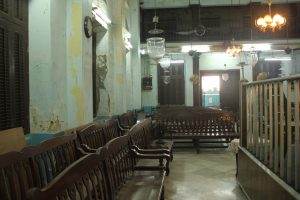
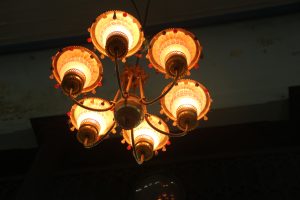
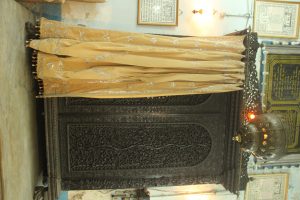
Finding the atmosphere utterly peaceful, I sit down on one of the benches in meditative silence. A few minutes later, I step out of the hall and into the tiny porch, to find Sam deep inside the Marathi newspaper. Not much of a talker is he. He answers my questions in fits and starts, his talk punctuated by grunts and silences. But he does unspool for me the story of this synagogue, the oldest in Mumbai.
It is a curious fact that the Jews of Mumbai have Tipu Sultan, the erstwhile ruler of Mysore and a devout Muslim, to thank for this place of worship.
Back in the late 18th century, Samuel Diwekar and his brother Isaac were captured by Tipu Sultan’s troops in the Anglo-Mysore War. Just as they were about to be condemned to death, Tipu asked him which religion they belonged to. On hearing that they were from the Bene Israel community, Tipu’s mother asked him to pardon them because she had read about this community in the Koran. Tipu let them go unharmed. The brothers Diwekar returned to Mumbai and built this synagogue as a gesture of thanks to the almighty. Which is why they named it ‘Shar Harahamim’, which translates to ‘gate of mercy’ in Hebrew. In Marathi, it is called ‘Dayache Dwar’. The synagogue had originally been built in the Esplanade area, but was rebuilt in its present location in 1860. Fittingly, this street has been named Samual Street, as a nod at the good soul who gave the local Jewish community a prayer house.
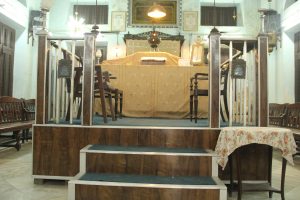
Sam gives me another nugget from (recent) history. Apparently, the locals have always had another appellation for the synagogue – one that is easier on the tongue and far more colloquial. They simply called it ‘juna mashid’ or ‘juna masjid‘ (meaning ‘old prayer house’ in Marathi, the primary local language). And when the Central Railway authorities wanted to name a railway station they had built nearby, they didn’t have to look far. They promptly named it ‘Masjid Bunder’.
Over the years, most of the Bene Israel Jews migrated to Israel. Others went further West to settle down in the USA. Yet others have co-mingled beautifully with the locals of Mumbai, taking Maharashtrian surnames and speaking Marathi well. Only that they continue to be ardent Jews, professing their faith quietly within the confines of their homes and their last few prayer houses such as this one.
Much like Sam, the keeper of an entire community’s memories and its cultural legacy. Sam, who has built his own little world within the confines of the synagogue.
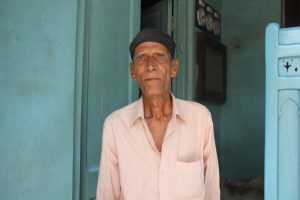
Fact file
It is supposed to be one of the oldest cities in the world that have been continuously inhabited. Some passionate locals claim that it is the oldest such city in the world. For the Hindus, it is the holiest of holies, the gateway to heaven and therefore, the preferred departure point for their final journey.
Varanasi must be one of the most storied cities in the world, one of the truly great cities. To put it mildly, it is an overwhelming city that assaults your senses. It is possible to decode Varanasi at different levels, depending on how deep you want to look, what your worldview is and which aspect of the city you encounter during your visit. For instance, while it is revered by many for its spiritual overtones, it is reviled by many others at the same time. Reviled for being another grimy, crowded, chaotic Indian city and for the various shady operators who try to rip tourists off.
But revere it or revile it, you cannot be indifferent towards it.
In ancient times, this city was known by the name ‘Kashi’. Even today, Hindus across the world refer to their trip to this city as ‘Kashi yatra’. Weddings in the South Indian Iyer community feature a ritual known as ‘Kashi yatra’, in which the groom symbolically renounces this material world and embarks on a journey to Kashi to live in abstinence for the rest of his life. Until, of course, the bride’s family manages to ‘convince’ him and bring him back.
In time, it got a second name ‘Varanasi’ and a third ‘Banaras’. Not many know that ‘Varanasi’ is the conjoined result of the names of two rivers that flow by the city: Varuna and Assi.
Look beneath its spiritual cloak and you will discern several little known facts about this city. For instance, the famous queen Rani Lakshmi Bai of Jhansi was born here. But today, her place of birth lies forgotten and forlon in a corner of this city. Varanasi offers you some of the best vegetarian food, especially chaat. The city is home to a fine architectural legacy left behind by erstwhile rulers and noblemen. Just 12 kms (8 miles) away likes the tiny town of Sarnath, where Gautam Buddha gave his first sermon after gaining enlightenment. And finally, it is a hub for tabla-making (the tabla is the chief percussion instrument in Hindustani classical music).
So friends, here is Varanasi in its various shades. Hope you enjoy this photo essay. Please leave a comment after the post. And if you want to know anything more about this city or plan your trip to it, I will do my best to help you.
P.S. These photos were taken when I was not yet a good photographer. I was still learning the ropes. Still, I want to share them with you to bring out the various shades of this interesting city. So, bear with me on this please. 🙂
______________________________________________________________________________
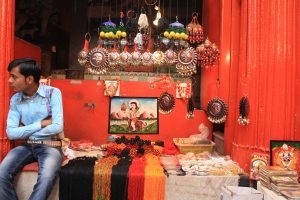
At the Kal Bhairav temple, a vendor looks out for tourists who will buy his wares as an offering to the Lord.
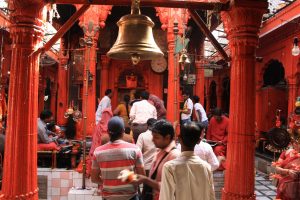
Devotees inside the Kal Bhairav temple. The deep red of the pillars and the walls give the temple a very tasteful look. This temple is dedicated to Lord Shiva in a fierce incarnation of Kaal (meaning both ‘fate’ & ‘time’ in Hindi). He wears a garland of skulls and wields a club made of peacock feathers.
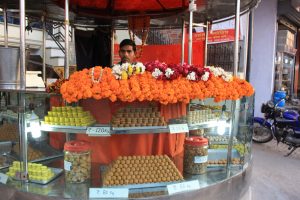
Flowers and sweets on sale. The flowers to appease the Gods and the sweets to appease your tummy. 🙂
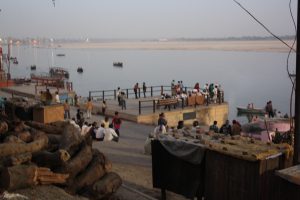
Dusk falls on one of the ghats lining the holy river Ganga.
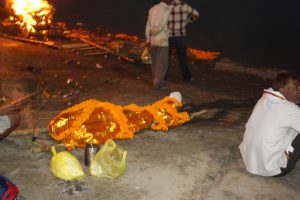
You are in queue for salvation. A corpse lying on the steps of the ghat, waiting for its turn to be burned. Afterwards, the ashes will be scattered in the Ganga.
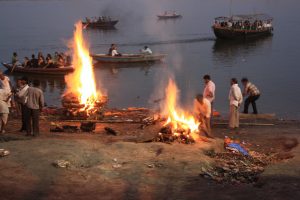
Burning pyres. It is indeed true that even this supposedly noble act of cremating a body has been turned into a racket in Varanasi. Those who want the body of a loved one consigned to the flames here reconcile themselves to touting, ‘commissions’ and a long waiting line.
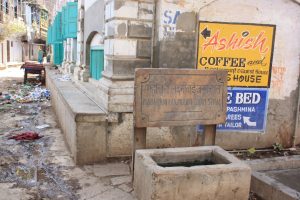
The faded inscription on this board is the only indication of the historic importance of this place. Rani Lakshmi Bai was born in 1828 in a house that stood here.
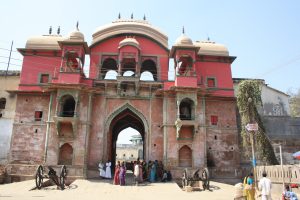
The Lal Darwaza, one of the entrances to the Ramnagar Fort, built by the erstwhile ruler of Banaras, Raja Balwant Singh, in the 18th century.
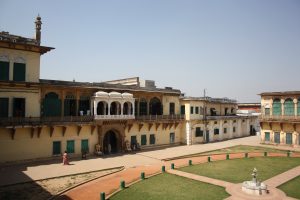
The chequered lines of the pathways and lawns inside the Ramnagar Fort. The Fort was also known as ‘Kashi naresh ka qila’ (meaning ‘the fort of the lord of Kashi’ in Hindi.)
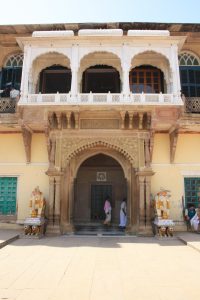
One of the viewing galleries inside the fort.
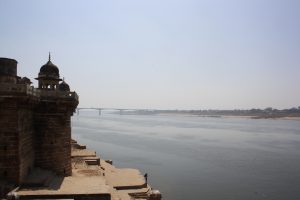
And quietly flows the Ganga, watched over by the fort. The pavilions on the rampart of the fort give you beautiful views of the river.
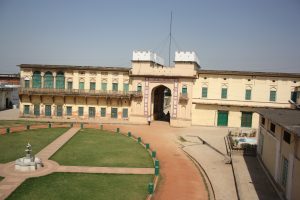
Symmetrical lines and contours inside the fort.
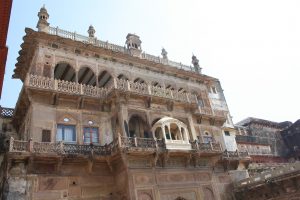
A royal pavilion overlooking the Ganga.
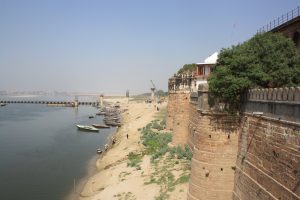
Boats waiting to take tourists across the river.

The lovely ornate entrance to the Buddhist monastery in Sarnath, 8 miles from Varanasi.
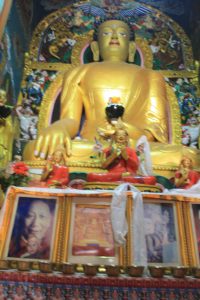
The Buddha. Need I say more?
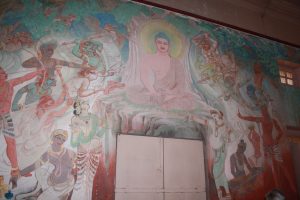
This mural on a wall of the monastery shows the Buddha in deep meditation.
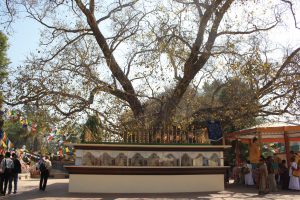
The more-than 2000 year old Bodhi tree under which The Buddha is said to have delivered his first sermon after attaining nirvana.
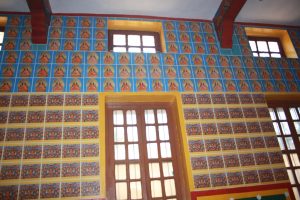
More murals on the walls of the monastery.
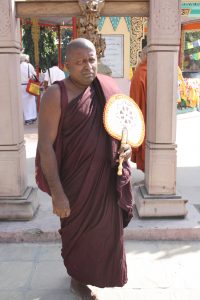
A Buddhist monk of the Theravada order from Sri Lanka.
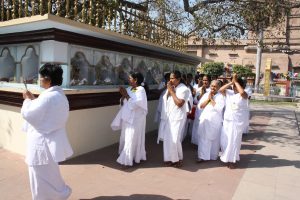
Buddhist women from Sri Lanka, who are on a pilgrimage to important sites in India. Buddhists from South Asian and South East Asian countries flock to places that feature prominently in the Buddha’s life. Sarnath is definitely one among them.
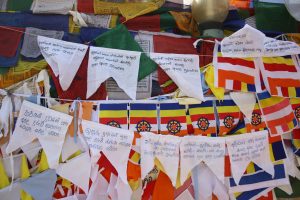
Wind horses, as the prayer flags are also called, are supposed to carry the prayers of devotees to the lord.
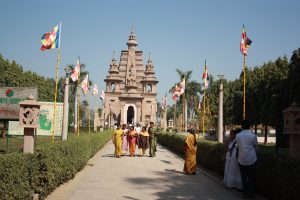
The Sarnath temple, seen from a distance.
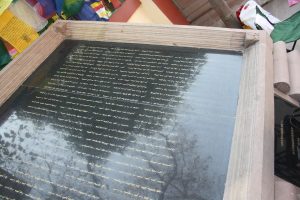
A long message inscribed on a stone slab, the interesting feature being that it is in the Mangolian script.
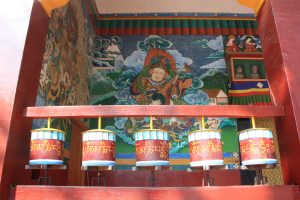
Devotees make it a point to turn the prayer wheels.
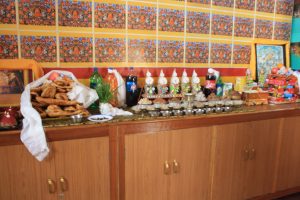
Votive offerings for the Buddha. Offerings range from bowls of water (considered the purest offering) to flowers and small cups of butter. Curiously, even soft drinks are offered by some people.
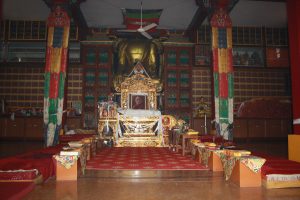
The prayer hall. A photo of the Dalai Lama is placed at the centre, flanked by two rows of seats for the chanting priests. When I visited, prayers were being chanted for a peaceful and prosperous new year.
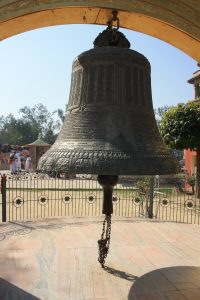
This bell weights two tons. That’s right, two tons. Put up in the deer park in Sarnath, it tolls twice daily. Apparently, it can be heard 4 kilometres away.
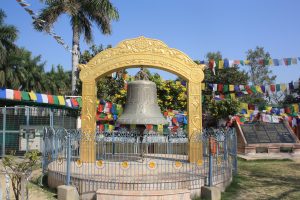
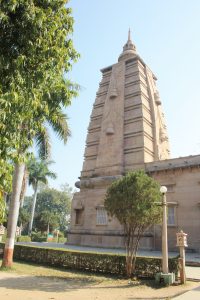
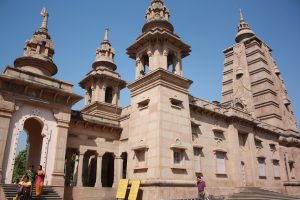
Two other views of the Sarnath temple.
This review was written in April 2011.
In his latest book “A View from the Machan”, field biologist and conservationist Ullas Karanth makes a strong case for greater use of science in the effort to save the tiger. The book takes a holistic look at the life of the tiger and calls for greater urgency in conservation efforts. A valuable addition to the debate on wildlife conservation. And to my bookshelf.
__________________________________________________________________________
Being borderline passionate about nature, wildlife and ecology, I keep looking for books that enrich my knowledge on these subjects. During a recent visit to Mangalore, I spotted a slim book in a tiny bookstore called Athree (near Jyothi Circle, if you must know). The fact that it was written by Ullas Karanth made me browse through it. The decision to buy the book was taken in less than two minutes. The extremely well designed cover and the superbly evocative illustrations inside definitely helped.
I started reading the deceptively slim book the same evening, with my favourite poison by my elbow.
Ullas has dedicated the book to two biologists who “taught me to think clearly about wildlife”. The book is divided into 13 chapters. In the first few, Ullas describes his abiding passion for animals and the forests (right from early childhood) and his transition into a trained conservationist and field biologist. The fact that his father (the noted writer Shivarama Karanth) did not believe in formal schooling and so, did not send him to school until the age of 11, gave young Ullas unbridled freedom to roam the forests. He did join school eventually and then went to train in Engineering. A career in Engineering and later, in farming only served to heighten the restlessness within him – to get back to nature and wildlife. And so, well into his thrities, he enrolled for a Wildlife Management Training Program being run by a noted conservationist in the USA.
Returning to India after the program, Ullas throws himself into efforts to conserve the tiger at Nagarahole in Karnataka. And meets Chinnappa – a ‘lone warrior’ against poaching and human invasion of the forests. The two strike a warm and enduring friendship immediately, and go on to make several field trips together. The feeling of ‘give and take’ between the old school and the new, is palpable as Ullas describes how he learns a whole load of field wisdom from Chinnappa and in return, inducts him (Chinnappa) into birdwatching. Ullas has devoted an entire chapter to Chinnappa and his work.
Through the life of Chinnappa, Ullas throws light on the trials and triumphs of several such ‘lone rangers’, who have formed the backbone of India’s wildlife conservation efforts over the decades. These are unsung heroes, who combine compassion for animals and forests, an honest approach to life and copious amounts of native intelligence. To me, this was one of the most heart-warming chapters of the book, especially since I have met a few such in Namdapha and Mudumalai.
While the first few chapters of the book are definitely informative and interesting, the best ones come later. Ullas steps back from his own work and takes a look at the larger issues like predator-prey dynamics, wildlife population estimation, the need to manage wildlife populations and finally, the vexatious question of ‘humans versus animals”. Every conservationist worth his pair of binoculars has commented on these questions over the years. There have been endless debates on the right way to conserve our wildlife and forests. Often though, these debates have been notable for sentiment and stridency. Scientific tenor has been mostly missing from the arguments. Often too, politicians, armchair conservationists and the media jump on to the bandwagon, confusing the issue further.
In his no-nonsense, logical yet gentle way, Ullas marshalls his arguments clearly and succintly. Further, he does not hesitate to take a definite stand. For instance, in the chapters titled “Sacred Groves for the New Century” and “Nagarahole:Shop or Shrine”, he says that enough damage has already been done to wildlife by mankind, and so, the need of the hour is to implement 100% protection of forests and animals. He advocates zero tolerence to poaching, logging and other attacks on nature. He is against “letting nature manage itself”, as demanded by some conservationists. Since mankind has already wrought extensive damage on the earth’s natural wealth, the only way we can bring back the balance is to proactively take efforts to manage forests and wildlife scientifically.
His point is that forests have to be considered as sacred groves and left alone – just as ancient tribes consider the core of their forest to be the ‘sacred grove’, where their guarding deities dwell and where nobody is allowed. The practice of incentivising locals to use the forests for their economic needs, in the hope that this will make them care for the forest better, is untenable. I can’t agree more with this point!
Elsewhere, he talks in detail about estimating the population of animals, taking the tiger as an example. He explains the inherent flaws in the waterhole census and pugmark census methods of estimating tiger population. According to him, a growing body of wildlife biologists is now using that good old statistical tool – sampling – in order to estimate the total population. Which is indeed true! (What surprises me is that it took so many years for this simple tool to be recognised and used in estimating animal population! As a statistical technique, sampling is several decades old, and has been used in several forms of research.)
Ullas ends the book on a realistic, yet hopeful note. He concludes that it is indeed possible to save our tigers, but only if we act now.
What I like best about this book is that it demands a lot from the reader. It is definitely not for the pop wildlife enthusiast. Skimming the chapters would mean missing the point entirely. Each chapter is loaded with relevant, interesting information, all of which feeds Ullas’ central arguments very well.
I finished the book in two sittings – one before and one after I refilled my glass. After a long time, I felt happy to have read a gripping account of animal life and wildlife protection. Having finished reading the book, I found myself musing about lone warriors, the battlefields which our forests have become, the intersection of human intelligence and greed and our moral duty to protect animals.
It was a long time before I went to bed.